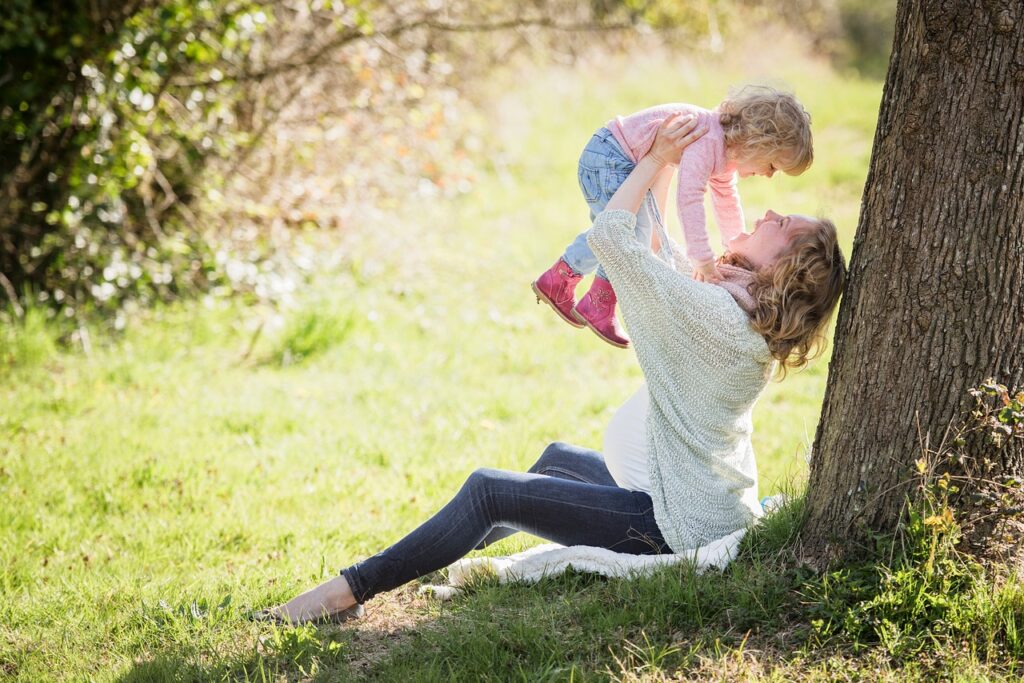Introduce
This section will introduce you to the different aspects of physical development in early childhood.
- You will begin to understand the importance of good nutrition for the healthy growth and development of babies from conception (in the womb) onwards. This includes vitamin supplements for mother and child as advised by the Department of Health and Social Care (DHSC).
- You will begin to recognise that healthy routines, which include a healthy diet, regular bedtimes and outdoor play, are important for healthy lifestyles, their learning and development and positive mental health.
- You will build an awareness of how poor housing, e.g. overcrowding and lack of a safe outdoor space can have a negative impact on a child’s health and development.

Develop
These resources will introduce you to the importance of good nutrition and healthy lifestyle choices in pregnancy and early childhood. They will also reveal the impact of environment on a child’s physical and mental health and development.
Physical activity can impact other areas of development in early childhood. Physical development in the early years of a child’s life can have a lasting impact on their physical and mental health, which can last a lifetime.

Read: Physical activity for early years
UK Chief Medical Officer’s Physical Activity Guidelines, 2019
Read through the infographic below from the UK Government which offers guidelines on physical activity for children from birth to 5.
This activity will help you to recognise that for toddlers onwards, healthy routines which include outdoor play are important for healthy lifestyles, their learning and development and positive mental health.
The growth and development of the brain and the body relies on the control of muscles and physical coordination. These can be nurtured through a range of skills that young children can develop whilst participating in everyday tasks, such as playing, building healthy relationships, communicating, and exploring the world around them.

Read: Early Movers ‘Tips for Nurturing Physical Development’
Early Movers
Using the link above, read through the tips about how to nurture physical development and learn why providing opportunities for young children to acquire these skills through play is a good way to encourage to them to be active, in both mind and body.
Good nutrition is important for the healthy growth and development of babies from conception (in the womb) onwards, which includes vitamin supplements for mother and child.

Read: Eatwell Guide
Public Health England 2016 Eat Well Guide
Read through the infographic below from Public Health England which shows the main food groups, and offers tips on how to eat a healthy, balanced diet. You will begin to understand the importance of good nutrition for the healthy growth and development of babies from conception (in the womb) onwards.

Read: NHS Vitamins, Supplements and Nutrition in Pregnancy
NHS
Read through the information in the link above to access NHS guidance on vitamins, Supplements and Nutrition in Pregnancy.
This includes vitamin supplements for mother and child as advised by the Department of Health and Social Care (DHSC).
NHS – Start for Life Website – This website has lots of support for pregnancy, baby and parenting.
Reflect

Stop and Reflect:
Whilst you work through this section think about:
- Whilst completing this section, think about how your work in the Greater Manchester area can support caregivers to nurture development through everyday activities.
- How can you increase understanding of the importance of healthy lifestyle choices, and how these can impact on the development and mental health of young children?
Further Resources
- Physical Development – GOV.UK
- This resource from the UK Government highlights the links between different areas of physical development.






